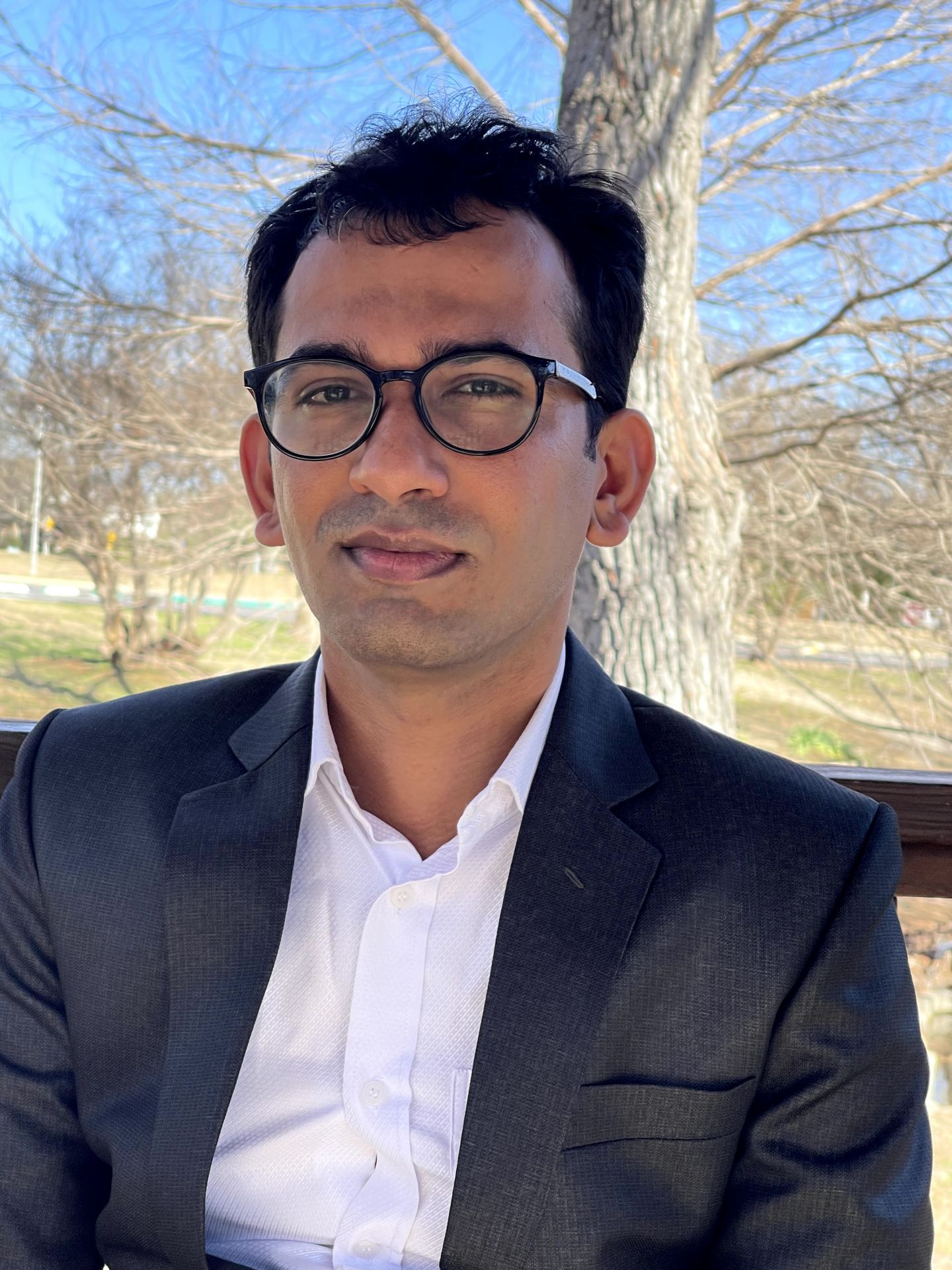Subas Acharya, PhD’22, who worked under the co-supervision of Professor Dmitriy Rachinskiy (Department of Mathematical Sciences) and Professor Alain Bensoussan (ICDRiA, JSOM), submitted his dissertation on applying stochastic processes to finance. His work was advised and supported by Dr. Alejandro Rivera (JSOM). The research applies techniques on problems of mathematical finance and economics, such as stochastic optimal control of real options and dynamic wealth management.
Stochastic processes are widely used as mathematical models of systems and phenomena that appear to vary in a random manner. Examples include the growth of a bacterial population, an electrical current fluctuating due to thermal noise, or the movement of a gas molecule.
Seemingly random changes in financial markets have motivated the extensive use of stochastic processes in finance.

“In both the problems, we pick a financial/economics scenario, model the problems, and solve them using stochastic and mathematical tools. Here I mention the two parts separately,” Acharya said.
“A choice made available to the managers of a company concerning business investment opportunities is called a real option. Common types of real options include the decision to expand, wait, or abandon a project. Expansion options study the timing and the scale of new construction development.
Real options are choices made available to the investors concerning investment opportunities. Real options in real estate investment would be an example worth considering as well, he said.
His project studies a real options problem with investment flexibility in time and capacity.
“In the real options problem, we basically model a specific scenario in a real options investment case (i.e. real estate investment case). It obtains the stopping times with the aim of maximizing the profit. This is more related to real options valuation and capital allocation decisions.
“By contrast, abandonment (exit) options focus on the optimal timing to close activities by selling the properties entirely. The cost of expansion can be divided into two parts: a variable cost and a fixed cost. The variable cost is a function of the capital outlay (e.g., the number of floors in the building). The fixed cost is independent of the capital outlay; it can include legal fees and construction permits,” Acharya said.
The study develops a dynamic wealth management model for risk-averse investors.
“In the wealth management problem, we are focusing on the behavioral aspects of the investors. Our model analyzes how the interaction between present bias and risk aversion affects investment decisions. Investors with present bias follow the practice of hyperbolic discounting – the inclination to choose immediate rewards over rewards that come later in the future, even when these immediate rewards are smaller,” Acharya said.
Acharya said there are two types of investors with present bias: sophisticated and naïve.
“Sophisticated investors are aware of their present bias, but naïve are not. The study further explores the interaction between risk-aversion and present bias and its implications for consumption policy, investment decisions, and welfare enhancements. The extension of the work studies the effects of ambiguity inclusion and the alternative solution approach using machine and deep learning,” he said.
Random-effects change point models, Acharya added, are formulated for longitudinal data obtained from cognitive tests. The conditional distribution of the response variable in a change point model is often assumed to be normal even if the response variable is discrete and shows ceiling effects.
Some parts of Acharya’s dissertation have been submitted to the Society for Industrial and Applied Mathematics (SIAM) Journal of Financial Mathematics (SIFIN) and Operation Research (OR).
Stories for the newsletter, Math Matters, are produced by faculty and staff of the Department of Mathematical Sciences.
Help us leave the planet a better place for future generations. Your support for the School of Natural Sciences and Mathematics funds scientific discoveries with real-world applications, student and faculty recruitment, and academic scholarships.